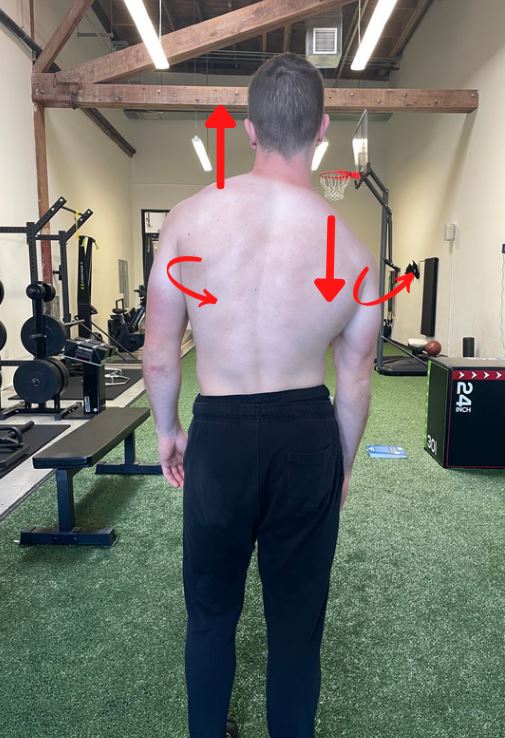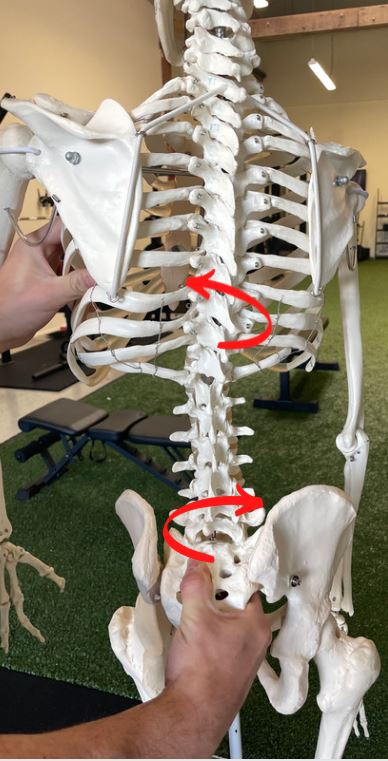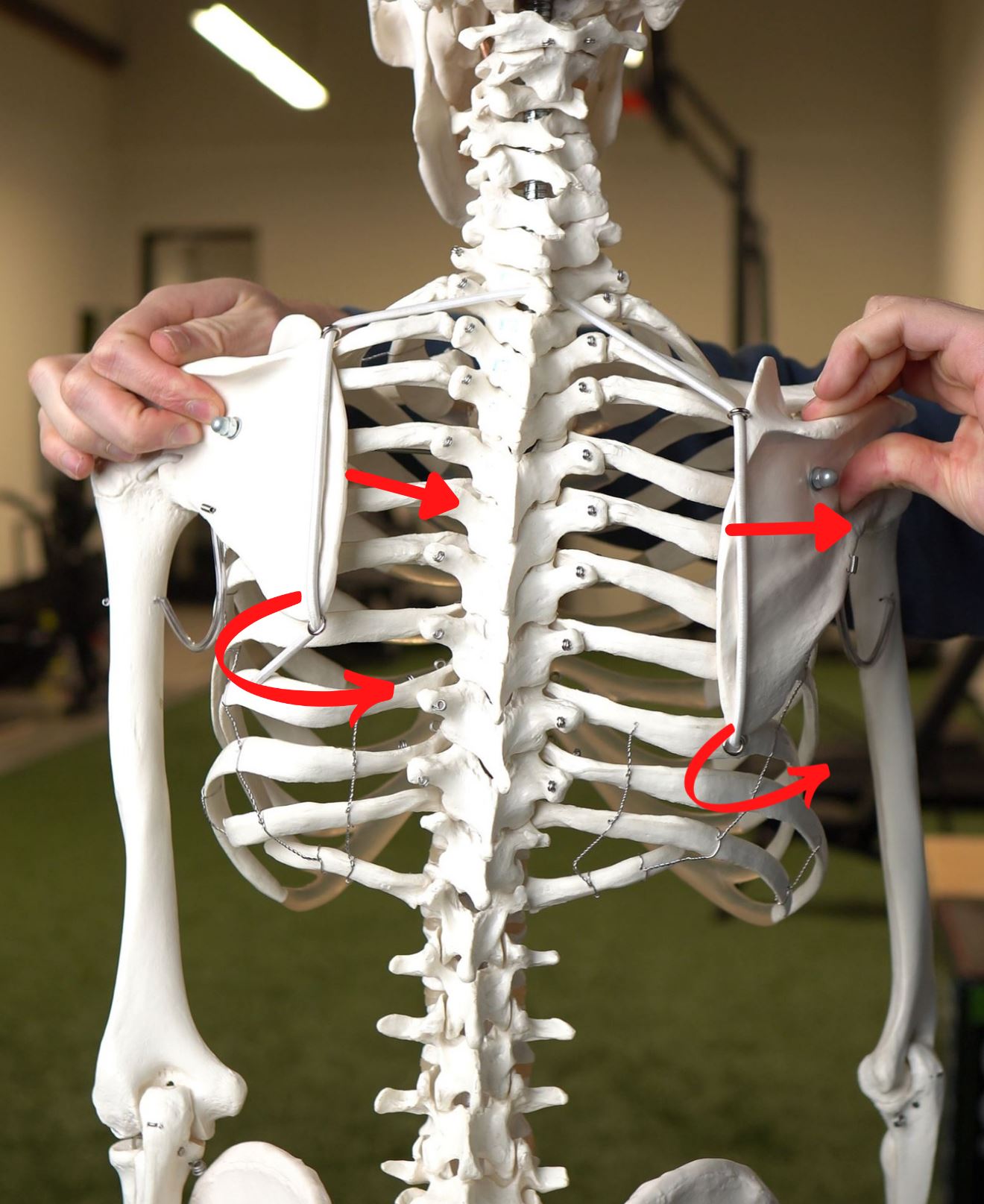How To Fix Uneven Shoulders - Lower Left vs Right Shoulder Asymmetries
Aug 04, 2022
In order to fix uneven shoulders, it’s first important to understand how your shoulders aren’t actually the problem – they are the symptom.
I always discuss how everything is connected, and asymmetrical shoulders are the ultimate example of this as you will see.
Because the human body is naturally asymmetrical by default (see here for more information), there are predictable layers of compensation that occur from the original “pattern” or “presentation” of the body.
In this article I will discuss:
- The root cause of uneven shoulders
- Left vs right uneven shoulder presentations
- The best exercises to fix uneven shoulders
If you would rather watch than read, see below:
Uneven shoulder posture – The root case
Humans are often right-handed for a reason. We have natural asymmetrical organ, brain, and diaphragmatic structure which biases us into leaning on the right side of our body relative to the left.
I discuss this much more in detail in my Right BC content, so I will shortly summarize it here. If you want more information, see that link.
In the Right BC pattern, we have:
- A higher right hip and a lower half of our spine turned right
- A mid/upper spine that attempts to “even our spine out” but counter-rotating to the left
- A subsequent higher left shoulder, lower right shoulder, and neck side-bent left
This default trunk position is primarily due to the factors that make us right-side biased in the first place, resulting in a series of compensations and turns throughout the skeleton in order for us to remain as “straight” as we can.
Now, it’s important to appreciate that there is nothing inherently wrong with a little uneven shoulder posture, but over time, this can lead to issues and restricted mobility.
Lower right shoulder explanation
This is the standard Right BC presentation, but things get a little more complicated when we look at how the structure of the ribcage is keeping us in that position.
We know that the ribcage position will dictate how the scapula can sit on that ribcage and move on it, which subsequently affects how the shoulder itself can move.
When we have a bias towards leaning on the right, we see a “side-bend” of the trunk to the right which limits our ability to open up the right ribs. Aa a result, the front right ribs are depressed and internally rotated, which creates tightness on the front of the right ribcage and pulls the scapula forward with it./
The scapula on the right side is biased towards internal rotation and a position moved away from the spine, which allows more space to open up in the back ribs.
In this case, people often experience:
- Pain on the front of their right shoulder
- Pain on the lower part of their right scapula
- Pain in the right shoulder reaching behind the body
On the left, we have a spine trying to turn left up top so the scapula gets pushed back on the left into external rotation and closer to the spine itself.
This results in a limit in our ability to open up the back ribs and move it away from the spine. In this case people often feel:
- Left upper trap/neck pain
- Pain between the left scapula and spine
- Pain lifting the left arm overhead
We use two simple tests to determine restrictions of the front or back of the ribs:
- Shoulder internal rotation shows how tight the front side of the ribs are – we would expect the right side to be more limited
- Shoulder external rotation shows how tight the back side of the ribs are – we would expect the left side to be more limited
Lower left shoulder explanation
In the case of uneven shoulders with a lower left, this is an additional layer of compensation on top of the Right BC pattern that we frequently see.
The reason why this happens is often because the right chest wall becomes so overly tight, that the body needs to find a way to open up the right ribs.
If we can’t expand the ribs to the extent we need, we will subconsciously feel like we are suffocating to a small extent. This can take the form of anxiety, increased stress, and/or neck pain.
What happens is the muscles of the front of the right neck that attach on the upper ribs, such as the Scalenes, try to elevate the ribs upon inhalation.

Normally the neck muscles are “secondary” muscles of inhalation and assist gently in breathing, but in this case, they’re working overtime as more of the primary muscles.
What happens is an additional rotation of the spine at T4. In Postural Restoration Institute’s terminology, we refer to this as “Superior T4 Syndrome”.
Now we have three turns in the spine:
- Lower spine turned right
- Mid-spine turned left
- Upper spine turned right
At this point, what we will see is a reduction in left shoulder internal rotation and increased right shoulder internal rotation, which is the opposite of what we would expect.
These people often present with pain in their:
- Right neck
- Left front shoulder
- Left scapula area
In order to address this, it must be noted that it is sometimes necessary to have some degree of manual therapy done by a certified practitioner in order to properly release the tight muscles on the right side.
How to fix uneven shoulders – lower right shoulder
Step 1: Open the ribs
I'll use an example client I've had so you can see how this all works in a real-life setting.
Here is my client before we worked together who presented with exactly what I described above with the Right BC pattern.
In order to fix this, the first thing we needed was to get full “expansion” capabilities of the right front ribs and left back ribs.
We used our shoulder IR and ER measurements as guides to determine if we are making progress. Ideal range of motion is 70+ degrees of shoulder IR and 90 degrees of shoulder ER.
Here are two exercises we used for that:
Technique used with permission. Copyright © Postural Restoration Institute®2022. www.posturalrestoration.com
Technique used with permission. Copyright © Postural Restoration Institute®2022. www.posturalrestoration.com
Step 2: Improve scapular position
Following that, we want to facilitate the right low trap and triceps to help pull the scapula back on the ribcage using muscles such as the lower traps and long head of the triceps:
Technique used with permission. Copyright © Postural Restoration Institute®2022. www.posturalrestoration.com
Technique used with permission. Copyright © Postural Restoration Institute®2022. www.posturalrestoration.com
Technique used with permission. Copyright © Postural Restoration Institute®2022. www.posturalrestoration.com
Step 3: Integrate the pelvis position + move to more upright positions
We can't forget that the position of the pelvis is influencing the position of the shoulders a well. Helping them shift left effectively will help ensure they don't just revert back towards being stuck in their right side.
We also want to make sure we can find and feel these positions in more challenging positions.
Technique used with permission. Copyright © Postural Restoration Institute®2022. www.posturalrestoration.com
How to fix uneven shoulders – lower left shoulder
In this case, things get a bit more tricky. If we’re going by the book in Postural Restoration concepts, we would first need to do specific manual techniques in a certain order to know if you truly have Superior T4 syndrome.
Because I am not a physical therapist, I am not qualified to speak on this. I have therapists I refer out to in this case if needed.
However, I understand that if you’re reading this, you want some tools to see if you can be successful improving this. I have had success in the past by using the following steps.
Just keep in mind that if you aren’t seeing success, go to https://www.posturalrestoration.com/find-provider and see if you can find someone in your area who is PRC certified.
Generally speaking, if you have a lower left shoulder, you are likely expressing some case of left anterior ribcage compression.
Step 1: Open The Left Anterior Ribcage
Because the left top ribs are now more internally rotated than before, we want to help open them up. Here are a couple of ways you can do that:
Technique used with permission. Copyright © Postural Restoration Institute®2022. www.posturalrestoration.com
Step 2: Improve Right Ribcage Expansion & Shut Off The Right Neck
At this point, we should have adequate shoulder internal rotation on both sides (70+ degrees). If you can't get your left shoulder internal rotation to improve, then that is a sign you may need manual therapy.
We want to get the right neck to relax and not have a reason to work in "overdrive" to elevate the top ribs. Using a head turn to the left will facilitate the activation of the right SCM muscle to help open up the right upper ribs:
Step 3: Reposition Left Scapula On Ribs
At this point, there is likely more of an underlying Right BC pattern, or measurements are great on both sides. This would be a good time to help the left ribs to push further back and incorporate the Left Serratus Anterior to do so.
Technique used with permission. Copyright © Postural Restoration Institute®2022. www.posturalrestoration.com
"Conor, What If I Want More?"
If you've read through this and thought, "Conor, this sounds great, but how can I ensure consistent and structured progress?" or "How about a step-by-step guide to improve my shoulders?", then I've got just the thing for you.
Introducing the THE NO B.S. GUIDE TO SHOULDER HEALTH. It’s designed with the clarity and depth I bring to all my content. With just 15 minutes a day, I’ve streamlined a program tailored for optimal shoulder health, catering to those even with the busiest of schedules.
Why go through tons of exercises, hoping one sticks, when you can follow a methodical program that progresses with you, ensuring not just mobility, but strength through that new range? With detailed 4K videos to guide you, it's almost like having me right there coaching you in real time.
Shoulders are more than just about posture; they're about life quality. The freedom to move, express, and live without restrictions. It’s time to invest in your shoulder health and reclaim that freedom. Check out the NO B.S. GUIDE and start feeling better in no time!
https://www.conorharris.com/shoulder-health-program
Best,
Conor.
Don’t miss out on free education
Join our email list to receive exclusive content on how to feel & move better.






